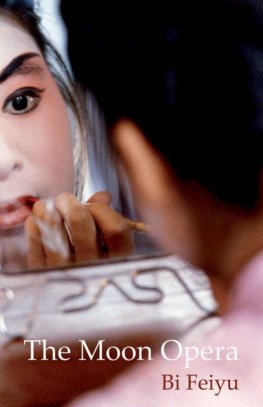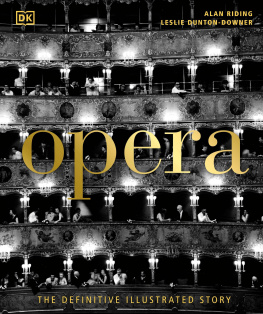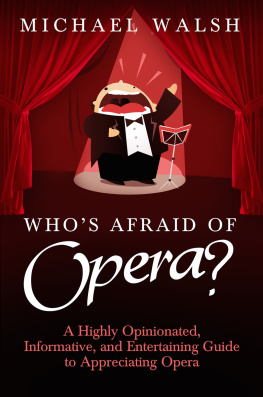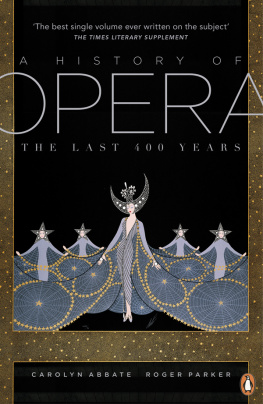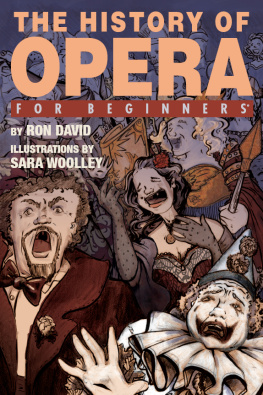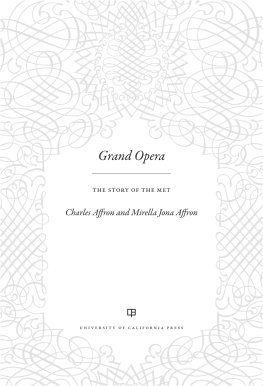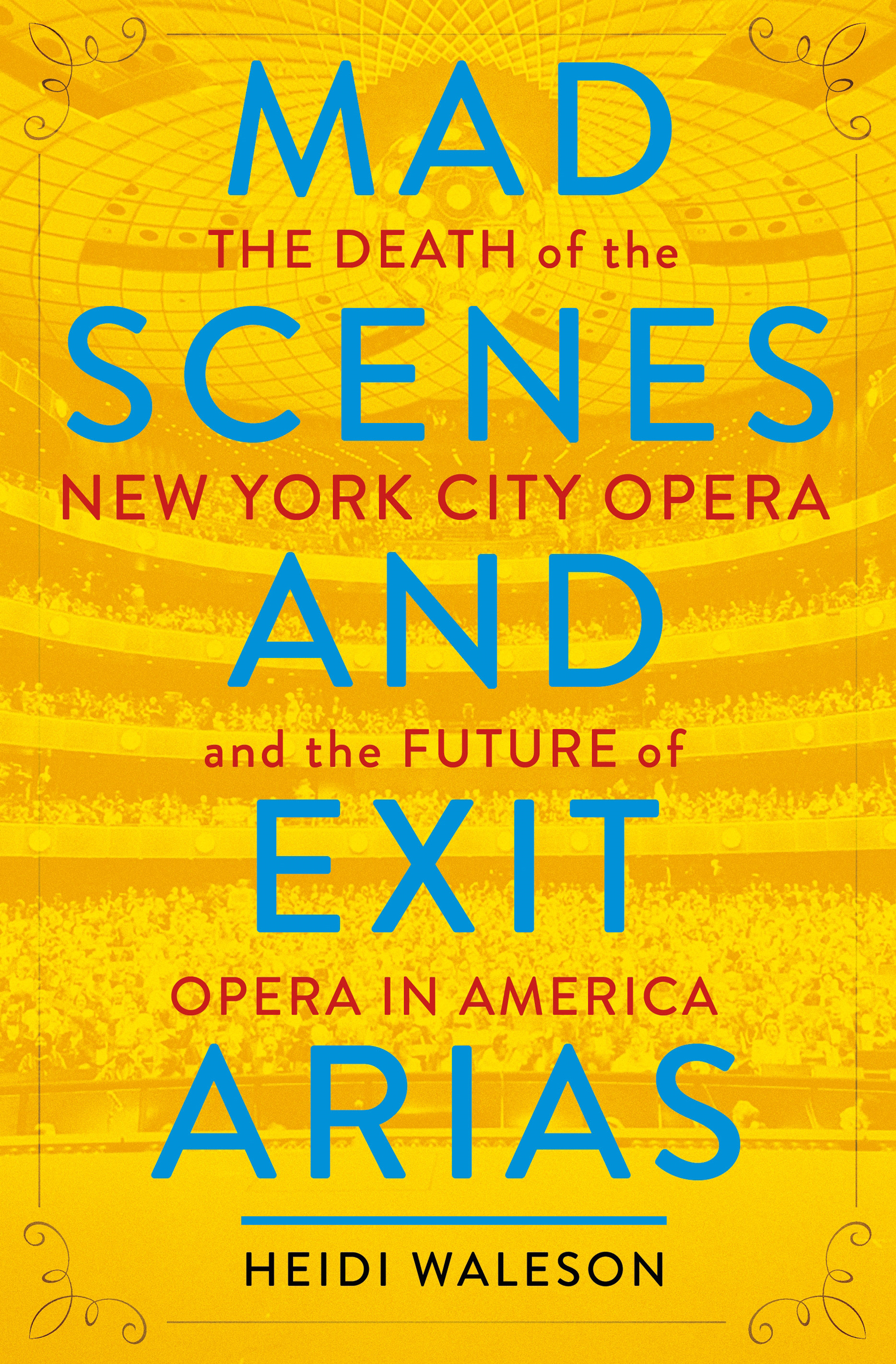Contents
Guide
Pagebreaks of the print version
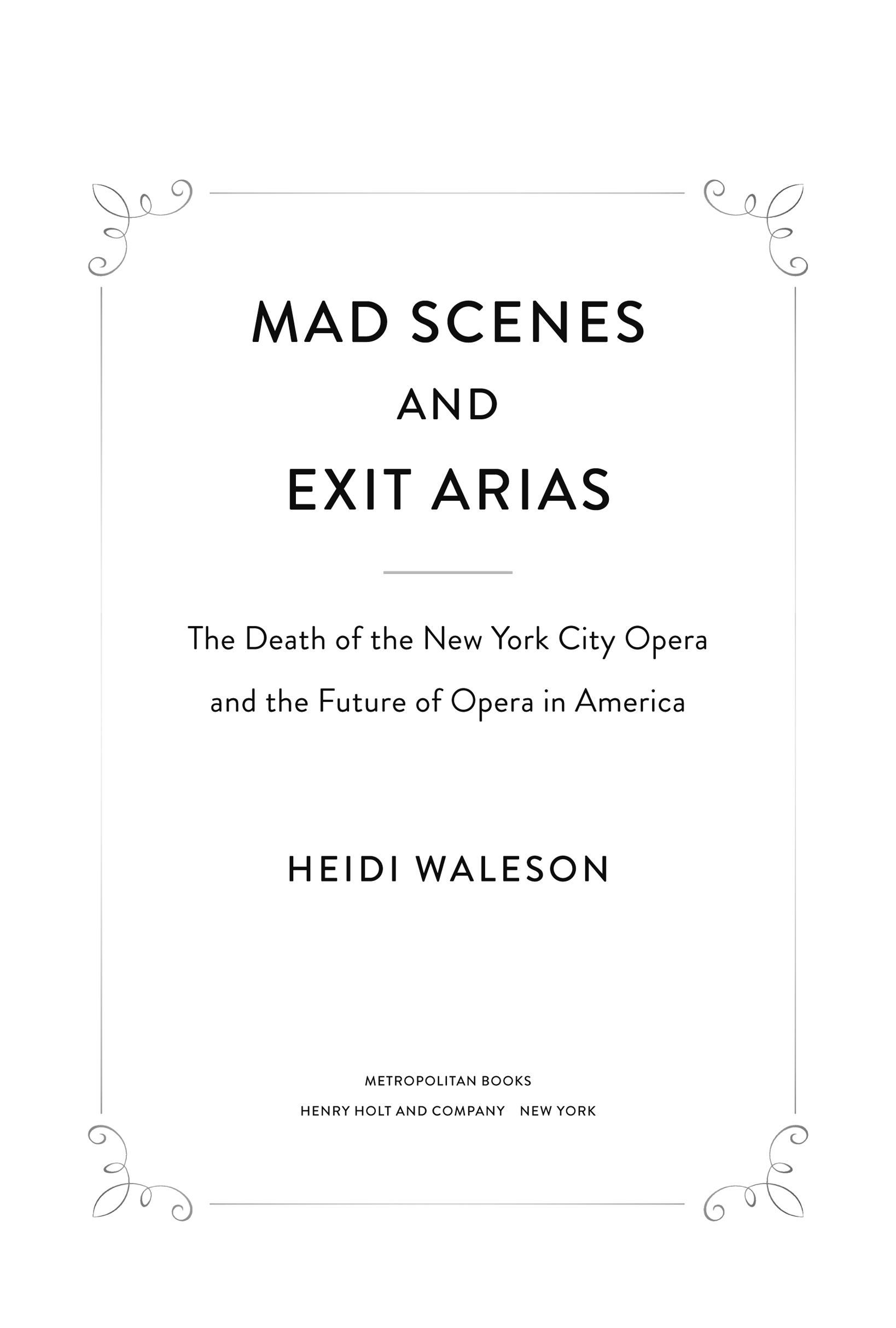
The author and publisher have provided this e-book to you for your personal use only. You may not make this e-book publicly available in any way. Copyright infringement is against the law. If you believe the copy of this e-book you are reading infringes on the authors copyright, please notify the publisher at: us.macmillanusa.com/piracy.
For Andy, who loves opera as much as I do
The only thing more expensive than opera is war.
Unknown
The New York City Opera was part of my life for decades, and the opportunity to tell its story was a wonderful gift. My thanks go to my publishersSteve Rubin, for his deep commitment to opera and music criticism, including the groundbreaking Rubin Institute, and Sara Bershtel, for her patience and insightand to my editor, Connor Guy, for his careful reading and shaping of the manuscript. Thanks also to Holts excellent editors and designers: Kenn Russell, Muriel Jorgensen, Rick Pracher, and Kelly Too. My agent, Will Lippincott, believed in the book from the first, helped me turn an idea into a concrete project, and supported me tirelessly along the way.
Many City Opera veterans and observers generously shared their experiences and thoughts with me, as well as supplying documents and memorabilia. I am especially grateful to Susan Woelzl, who, as the companys longtime press director and, briefly, archivist, was enormously helpful in providing direction, contacts, materials, and context, to say nothing of the complete list of the companys repertoire and productions.
The Wall Street Journal has allowed me to experience and write about the American opera landscape in depth for many years. As music criticism fades away at many traditional media outlets, the Journal has remained steadfast in its belief in the importance of chronicling the cultural landscape. As a result, I am one of the few critics who still has the opportunity to see and write about new operas, wherever they may take place. I am eternally grateful to Ray Sokolov, who launched our page at the Journal and invited me to write for it in 1985; to Eric Gibson, who ably succeeded him; and to the indefatigable Arts in Review staff, Barbara Phillips and Brian Kelly.
My opera-loving parents planted the seed early, and waited out my teenage apostasy in the church of Joni Mitchell. My wonderful daughters, Hannah and Lily, inspire me every day. Surely it was fate that my husband, Andy Manshel, and I met again, nearly a decade after our last encounter (in high school), at a New York City Opera performance of The Makropulos Affair in April 1981. Since then, he has been my rock, my reader, and my cheerleader, as well as my constant companion at hundreds of opera performances, thrilling and dire alike. I couldnt do it without him.
ON SATURDAY NIGHT, September 28, 2013, at the Brooklyn Academy of Music, the New York City Opera dove into Mark-Anthony Turnages Anna Nicole . Its a raunchy, rollicking farce, trashy and splashy in the manner of tabloid headlines and reality TV, about the waitress-turned-bombshell Anna Nicole Smith, who got breast implants, married an elderly oil billionaire, and died of an overdose of pills at age thirty-nine in 2007. Done up in lurid pinks and oranges, sung in burlesque rhythms and suggestive blues backed by a raucous orchestra, it sucked in the audience, entertaining them even as its mockery took aim at their country. Im gonna rape that goddamn American dream, sang one of its characters.
But that night, the bigger drama was off the stage. In the beginning of September, City Opera had put out a distress call and a threat: unless it raised $7 million by the end of the month, it would cancel the rest of its season. On Thursday, the board had pulled the trigger, voting to begin bankruptcy proceedings the following week and close down the company entirely. If they could come up with the $7 million by September 30, perhaps the crisis could be averted, but that was now just two short days away. Saviors had rescued City Opera before, but this time, the performers and the audience knew in their heart of hearts that the game was up and that this would most likely be the seventy-year-old companys finale.
After the curtain fell, and the shell-shocked musicians in the pit began packing away their instruments, George Steel, the companys general director, summoned the cast and orchestra onstage. A handful of players complied, but Stewart Rose, the principal hornist and a member of the orchestra for decades, was having none of it. You killed City Opera, he yelled at Steel. Its your fault that this is our last performance.
Who killed City Opera? In hindsight, Steel is but one contender for that dubious title. A better question would be, what was City Opera, and were the seeds of its demise sown at the moment of its birth seventy years earlier? Born into wartime New York, the pet project of a populist mayor and a few opera-loving public servants, its very premise was a paradox: it was conceived to be an affordable opera for the people, yet, as the saying goes, the only endeavor more expensive than opera is war. Over the next seven decades, City Operas identity morphed with its leadership and in reaction to radically changing times and circumstances. Sentimental attachments notwithstanding, by the time of its death, it was a different creature altogether.
For good and ill, the landscape of opera in America today bears little resemblance to what it was in the middle of the twentieth century. Beginning in the 1950s, opera boomed across the country, a growth that accelerated in subsequent decades. But that expansive time has given way to the straitened twenty-first century, and opera-producing companies have been obliged to retool or die. In many ways, the New York City Opera was unique, but its struggles are excruciatingly familiar to opera company impresarios now doing their best to learn from its example. The New York City Opera led the way for the artistic development of opera as an American art form, performed, produced, written, attended, and loved by Americans. And as it buckled under the pressures of changing times, audiences, tastes, and allegiances, coupled with inexorably rising expenses, it became a more sinister kind of leadera bellwether, the canary in the coal mine, warning others of a perilous future. Caught in the maelstrom of change, City Opera could neither see the future coming nor adapt to it.
The death of City Opera raises other existential questions as well. Is it still possible to provide a living for a large group of artists by presenting live performances? Who is the audience for this old but still vital art form, and what do they want to see today? Is the creative impulse behind it still evolving? What is operas place in a country of wildly diverse interests and forms of entertainment that were unimaginable when the New York City Opera was founded? The companys story offers both a history and a glimpse of possibilities that lie ahead.
NEW YORK CITY in the early 1940s was a world center of finance, trade, and communicationsbut it was also Americas cultural mecca. It was home to both the Metropolitan Opera, created by the nouveau riche industrialists of the late nineteenth century, and the New York Philharmonic, Americas oldest symphony orchestra. High culture, money, and social status were inextricably linked, and for the citys moneyed upper classes, attendance at the opera or the concert hall, in tuxedos, diamonds, and furs, was a way of broadcasting ones success. However, there were also plenty of people in New York who were interested in culture but couldnt afford to attend these elite temples (an average ticket to the Met cost $3.30), or even Broadway shows, where the average ticket price was $2.50 in 1943, one-tenth of a bookkeepers weekly salary. In the late 1930s, the Works Progress Administration put on federally funded orchestra concerts at Radio City Music Hall and Carnegie Hall, with tickets priced at 25 cents, which had attracted an enthusiastic public. Furthermore, the war in Europe had flooded the city with now-penniless refugees who had been sophisticated consumers of high culture in their home countries. New Yorks progressive mayor, Fiorello La Guardia, felt strongly about culture for the masseshe was both a champion of the little guy and the son of an immigrant Italian musician who had once accompanied the soprano Adelina Patti on an American tour. La Guardia had long dreamed of founding a center of cultural activity that would be within everyones reach.


